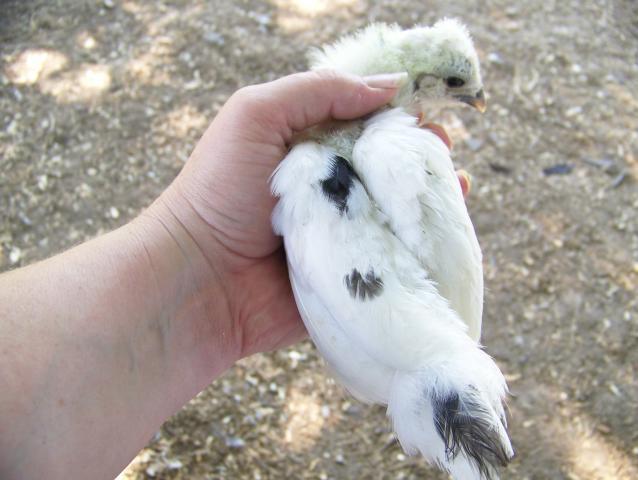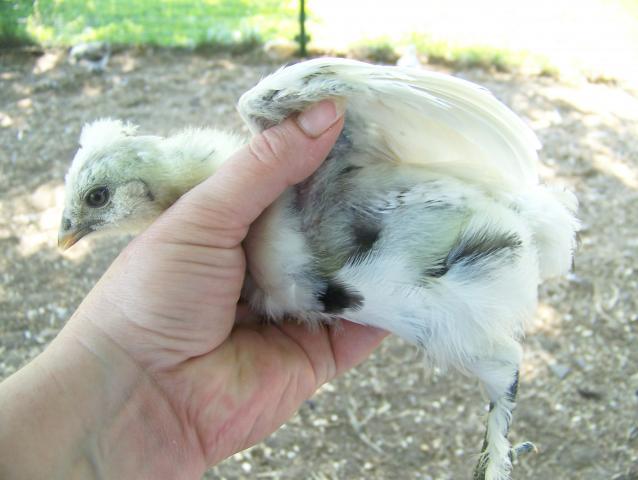Hi all -
Here are a couple EE/silkie crosses that I hatched in July - the EE hens were silver duckwing, blue wheaten, or partridge, and the silkie roos were blue, grey and blue partridge. I have no white or cuckoo birds, so the colors of these birds have thrown me for a loop!
Is this barring? Or will this one probably molt into something totally different down the road?

And THIS chick - well, lets just say, if you draw a line from the tip of her beak, straight down her spine to her tail, and divide her in half - her right side is feathering in totally white, but her left side has random black feather patches. This isn't what I've seen referred to as a "paint", is it?


Any thoughts or comments are welcome!
Thanks -
Here are a couple EE/silkie crosses that I hatched in July - the EE hens were silver duckwing, blue wheaten, or partridge, and the silkie roos were blue, grey and blue partridge. I have no white or cuckoo birds, so the colors of these birds have thrown me for a loop!
Is this barring? Or will this one probably molt into something totally different down the road?

And THIS chick - well, lets just say, if you draw a line from the tip of her beak, straight down her spine to her tail, and divide her in half - her right side is feathering in totally white, but her left side has random black feather patches. This isn't what I've seen referred to as a "paint", is it?


Any thoughts or comments are welcome!
Thanks -
Last edited:


